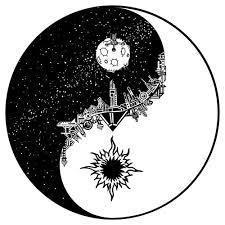38210014
Chapter 6: Morphology
Descrição
Sem etiquetas
Mapa Mental por Samy Acevedo, atualizado 11 meses atrás
Mais
Menos

|
Criado por Samy Acevedo
mais de 1 ano atrás
|
|
Resumo de Recurso
Chapter 6: Morphology
- Morphology
- The study of those basic
elements in a language
- The study of those basic
elements in a language
- Types of Free
Morphemes
- Lexical Morphemes
- Nouns, verbs,
adjectives, adverbs.
- Nouns, verbs,
adjectives, adverbs.
- Functional Morphemes
- Articles, conjunctions,
prepositions and
pronous.
- Articles, conjunctions,
prepositions and
pronous.
- Lexical Morphemes
- Morphemes
- Minimal unit of
meaning or
grammatical
function
- Example
- Talk: talks, talker,
talked and talking
- Talk: talks, talker,
talked and talking
- Example
- We have 2 types of morphemes
- Free Morphemes
- Can stand by themselves
as single words
- Example
- New and tour
- New and tour
- Example
- Can stand by themselves
as single words
- Bound Morphemes
- Forms that cannot normally satand
alone and are typically attached to
another form
- Affixes
- Example
- Undressed
- Undressed
- Example
- Affixes
- Forms that cannot normally satand
alone and are typically attached to
another form
- Free Morphemes
- Minimal unit of
meaning or
grammatical
function
- Derivational Morphemes
- Is a linguistic term that refers to an affix
added to a base or root word to create a
new word with a different meaning or
grammatical category.
- Example
- friend - friendship
- friend - friendship
- Example
- Is a linguistic term that refers to an affix
added to a base or root word to create a
new word with a different meaning or
grammatical category.
- Inflectional Morphemes
- An inflectional morpheme is a
linguistic term that refers to an affix
added to a word to indicate
grammatical information or to
express various grammatical
relationships within a sentence.
- Example
- walk - walking
- walk - walking
- Example
- An inflectional morpheme is a
linguistic term that refers to an affix
added to a word to indicate
grammatical information or to
express various grammatical
relationships within a sentence.
- Morphological
Description
- An inflectional morpheme never
changes the grammatical category of a
word
- An inflectional morpheme never
changes the grammatical category of a
word
- Morphs and
Allomorphs
- Morphs
- Is the smallest grammatical unit
in a language that carries
meaning or serves a grammatical
function.
- Is the smallest grammatical unit
in a language that carries
meaning or serves a grammatical
function.
- Allomorphs
- Is a variant of a
morpheme that occur
in different
phonological contexts.
- Example
- Morpheme -s, can
have different
allomorphs, -z, -ɪz, -s
- Morpheme -s, can
have different
allomorphs, -z, -ɪz, -s
- Example
- Is a variant of a
morpheme that occur
in different
phonological contexts.
- Morphs
- Other Languages
- We can identify morphemes in other
languages and patterns that show the
basic types of morphemes to know
how different forms are used in other
languages to perform logical features
and processes.
- We can identify morphemes in other
languages and patterns that show the
basic types of morphemes to know
how different forms are used in other
languages to perform logical features
and processes.
Quer criar seus próprios Mapas Mentais gratuitos com a GoConqr? Saiba mais.
